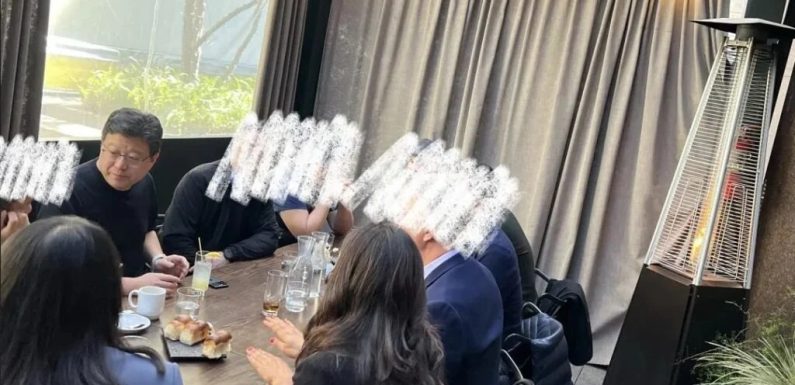And I also love mags. Like i am this type of fiend about like fashion and ladies’ publications, however you do not see any conversation of lesbians in there.
In essence, both Rick and Michelle felt excluded from a common types of news for their intimate identities, which adversely affected them.
And in addition, just like the lack of GLB numbers into the news had consequences that are adverse numerous participants, therefore did the negative portrayals of GLB people into the news. For instance, Brian talked about experiencing restricted within the phrase of their identity that is gay as outcome associated with the stereotypical portrayals of homosexual guys within the news.
Simply every thing had been therefore, therefore negative. Also it gets you type of warped if you are young—about just exactly what the homosexual life style is, about promiscuity and medications and possibly the flamboyantness, in the place of possibility. It surely did actually restrict the alternative with—you recognize, being gay—how my life might be.
Hence, the news’s negative depiction of gay lifestyles made Brian feel during the time which he had not been in a position to deviate because of these stereotypes with regards to his individual phrase of their identification. Because the above findings explain, both absolute and invisibility that is relative Fryberg & Townsend, 2008 ) can exert harmful emotional impacts on GLB people, including making them feel less valuable as users of culture and restricting their identification phrase. Because of the more absence that is pervasive of representation within the news in previous years ( Gross, 1994; Gross, 2001; Hart, 2000; Russo, 1987 ), older GLB people could have been more afflicted with absolute invisibility, whereas more youthful GLB people, and also require been confronted with more representations of GLB people when you look at the news, may be much more affected by general invisibility. But, future scientific studies are had a need to explore the consequences of both forms of invisibility on GLB people.
The influence that is negative of media on participants’ identities has been pertaining to the possible lack of GLB role models when you look at the news. The results from Study 2 strongly suggest that role models are important to the identities of GLB individuals as a whole. In specific, our findings suggest that news part models foster pride in GLB people’ identities, offer a supply of convenience, which help them see their identities more ina positive manner Having said that, the news also generally seems to adversely influence GLB people by causing them to feel excluded from society also to feel limited within their expressions of their GLB identities.
GENERAL CONVERSATION
One of the main efforts of this present scientific studies are its initial research associated with the impact of news part models on GLB identification utilizing both a quantitative structure and a richer, qualitative approach. Notably, the individuals during these studies supplied valuable insights which have not showed up somewhere else when you look at the literature that is empirical. The importance and legitimacy regarding the findings are sustained by the known proven fact that part models had been discussed by almost all of the individuals in learn 2, aside from what their age is, sex, or back ground.
Even though exploratory nature of Studies 1 and 2 revealed important findings about any of it reasonably unexplored topic, the type associated with studies additionally plays a part in their limits. In specific, a significant limitation associated with present scientific studies are that causality can’t be inferred through the findings. Consequently, it may not be definitively determined from our findings that good part models influence GLB identification. Easily put, it will be possible that GLB people with positive, completely developed identities may become more more likely to search for part models into the news. Nonetheless, other research has experimentally founded that role models do exert a positive impact on people (see Ochman, 1996 ), which lends credence to the argument that news part models foster good identity in GLB participants. Future research about this subject should try to substantiate the findings associated with study that is present experimental proof. For example, experimental studies could expose GLB people to media depicting either GLB or role that is heterosexual and later assess alterations in individuals’ self-concepts after experience of both kinds of part models to ascertain more conclusively whether good GLB role models enhance GLB individuals’ sense of self-worth.
Another limitation of this current research is that the 2 examples of individuals might not be representative associated with the GLB populace in general. Especially, the examples might have been less diverse compared to basic GLB population with regards to individuals’ ethnicity and individuals’ amount of convenience using their identities or understanding of the representation of GLB people into the news. In addition, both studies were carried out in Austin, Texas, a somewhat GLB-friendly town. GLB folks from other urban centers and nations may have experienced experiences that are different the news. Hence, future research on the subject of GLB identification as lesbian sex naked well as the news will have to use more representative samples so that you can ascertain the impact of role models regarding the identities of other GLB populations.
Although these restrictions present problems when it comes to generalizing and creating causal explanations associated with findings, they cannot undermine the share associated with the current research to the knowledge of the news’s impact on GLB identification. Certainly, a few implications emerged through the findings associated with two studies. First, there plainly exists a relationship between your media and GLB identity, which makes it imperative that GLB news sources look at the communications they convey for their market. For instance, numerous individuals both in studies complained about stereotypical figures and negative portrayals, even yet in programs especially targeted toward a GLB market, such as for example Queer as Folk. Therefore, it really is reasonable to conclude that decreasing stereotypical portrayals of GLB figures within the news would gain GLB people by potentially expanding the number of choices for GLB identification beyond the “sissy” and “dyke” archetypes that the media therefore frequently provides ( Russo, 1987 ).










